🌳oto-ing: CV, VCV, and CVVC guide.

RELEVANT TERMINOLOGY
1: Beginning Vowel Transitions. Can be from a consonant to a vowel, or a vowel to another vowel.2: Flats. These are the areas where the 'lines' on the spectogram are most stable.3: Ending Vowel Transitions. The location where the flat lines 'destabilize' before going to the end of a note, towards a consonant, or towards another vowel.
(Warning: I will use two different definitions of the 'consonant' term. Additionally, beginning and overlap rules can be broken based on further context, with all the others following.)
CV:
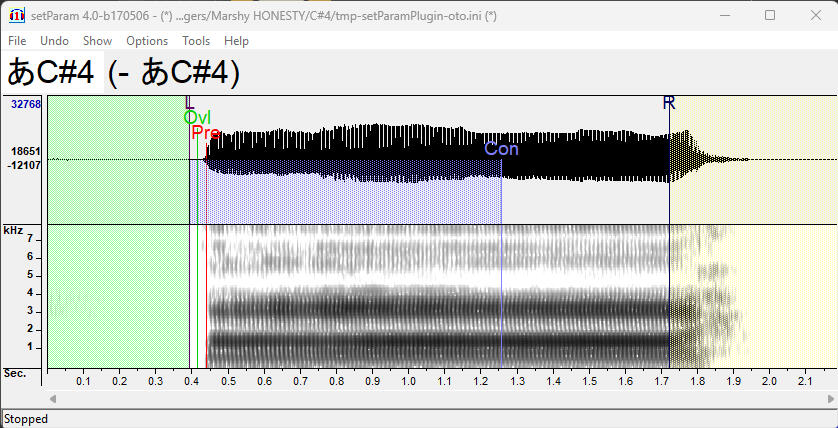
- V
Beginning: Before the very start of the syllable.Overlap: Before the start of the syllable. SHOULD be less than 50% of the preutterance.
Preutterance: Start of vowel.Consonant: A little after the start of a flat.Ending: A little before the end of a flat.
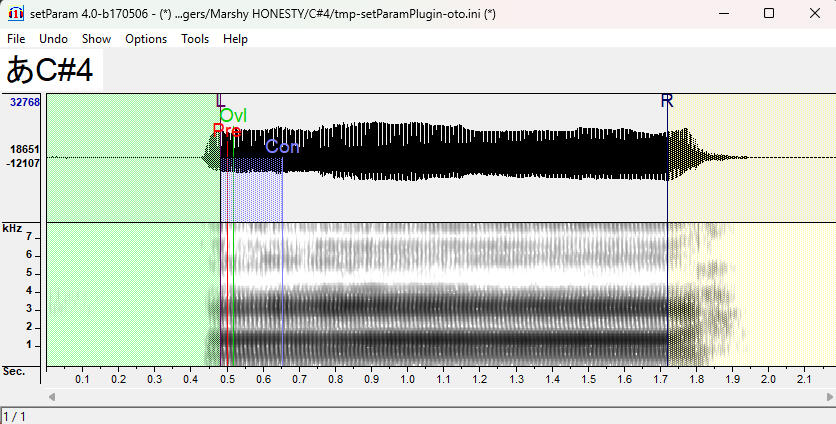
V (CV Vowel Blends)
Beginning: A little after a flat.Overlap: Twice the amount of the preutterance.Preutterance: A small number from 15-40. Higher numbers provide smoother blends, but risks crossfade issues with faster notes.Consonant: A few moments after the overlap. This can possibly be when the flats get 'flatter.'Ending: A little before the end of a flat.
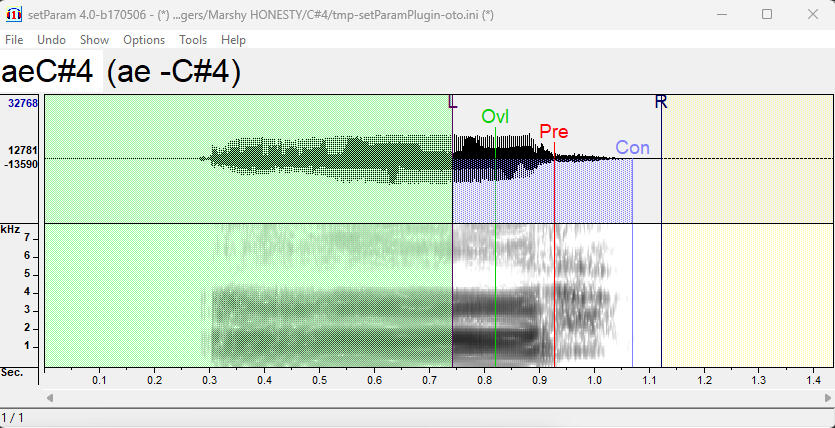
V -
Beginning: A few moments before the end of a flat.Overlap: A little before the end of a flat. SHOULD be less than 50% of the preutterance.Preutterance: Between the start or end of an exhale. Feel free to adjust according to preference.Consonant: The end of the exhale. Should be placed a little after absolute silence or as close as you can get it.)Ending: A few moments after the silence.
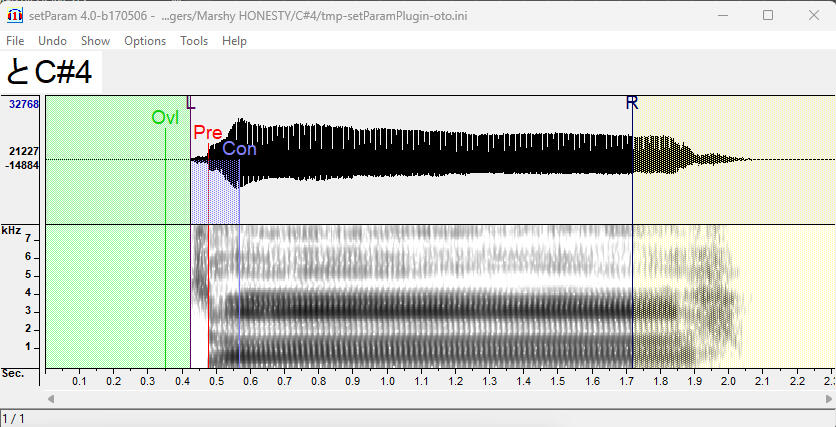
Hard CVs (T,Ch,K,Ts,P)
Beginning: The start of the CV. It can also be a few moments before the CV.Overlap: A little before the start OR a few moments before the CV. (Expert tip: make the overlap placement similar to an overlap on a fast-yet-still-natural VCV transition.)Preutterance: The start of a vowel.Consonant: A little after the start of a flat.Ending: A little before the end of a flat.
(Note: Putting the overlap after the beginning is likely a better choice when oto-ing for CVVC.)
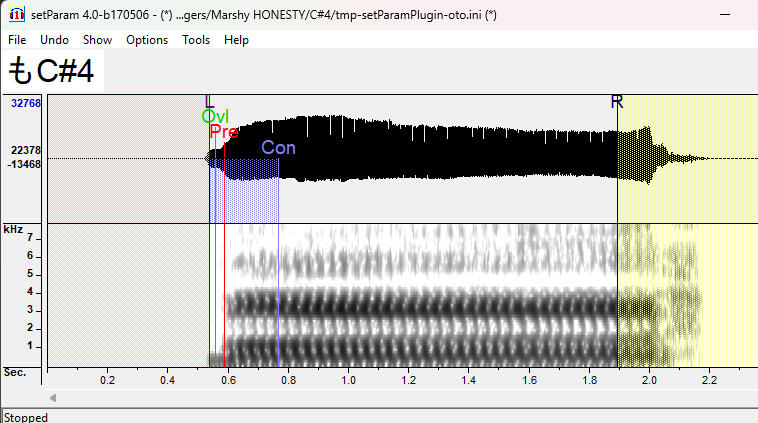
Soft CVs (M,N,F,H,S,Sh,Z)
Beginning: A little after the start of the consonant. Can be adjusted to make usage smoother in different circumstances.Overlap: The middle of the consonant (adjustable). SHOULD be less than 50% of the preutterance.Preutterance: The start of a vowel.Consonant: A little after the beginning of a flat.Ending: A little before the end of a flat.
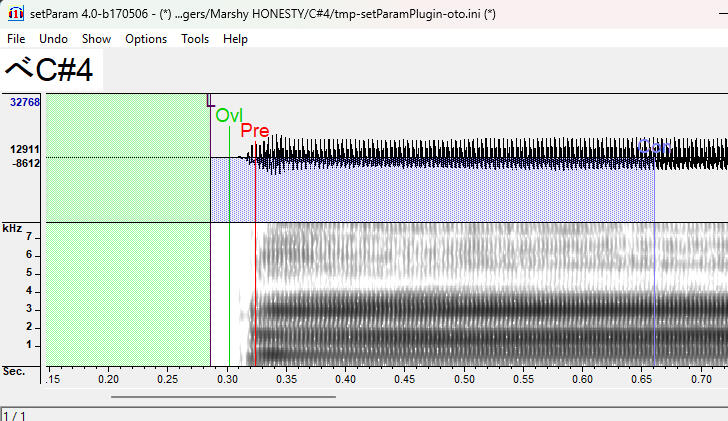
'Softer' Hard CVs (B,D,G,J,R)
Beginning: A little before the start of the consonant.Overlap: *Just* before the start of a consonant. The beginning should be adjusted so that the overlap is around 50% or less of the preutterance.Preutterance: The start of a vowel.Consonant: A little after the start of a flat.Ending: A little before the end of a flat.
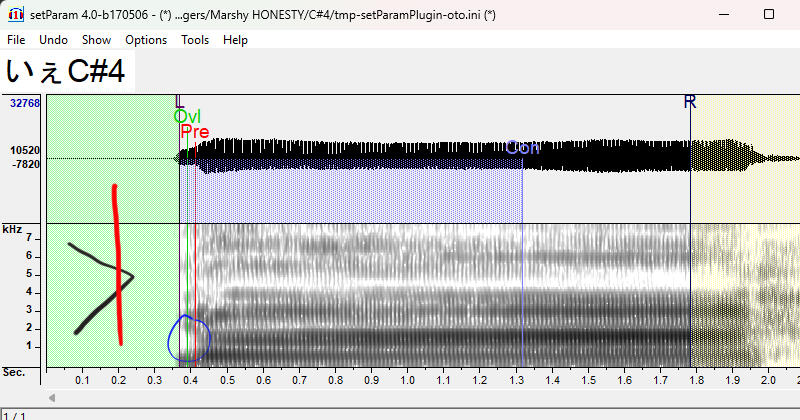
'Glide' CVs (W,Y)
'Glides' refer to the triangular-looking transition between one vowel to the other, but can be observed in other circumstances.
Beginning: A little after the start of the consonant.Overlap: Around 50% of the preutterance.Preutterance: A tiny bit after half of the glide, but must be before the glide ends.Consonant: A little after the start of a flat.Ending: A little before the end of a flat.
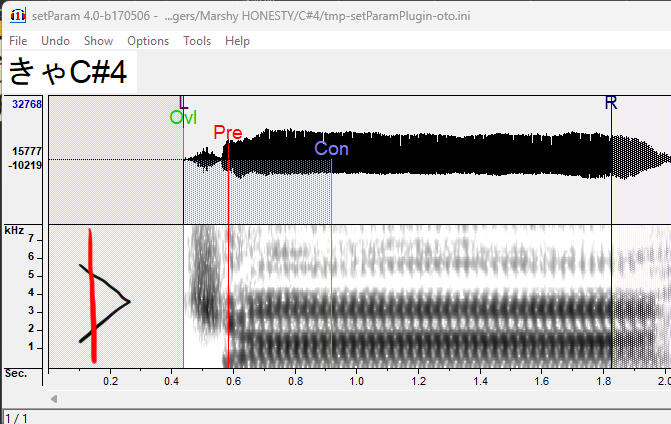
'Glide' CCVs (Ky,My,Ny,Ry,Gy,By,Py,Hy)
Beginning: Where the start would be in the closest similar CV case.Overlap: Where it would be in the closest similar CV case.Preutterance: Between the start or end of a glide. This is very subjective, so adjust to your preferences.Consonant: A little after the start of a flat.Ending: A little before the end of a flat.
CV-VV:
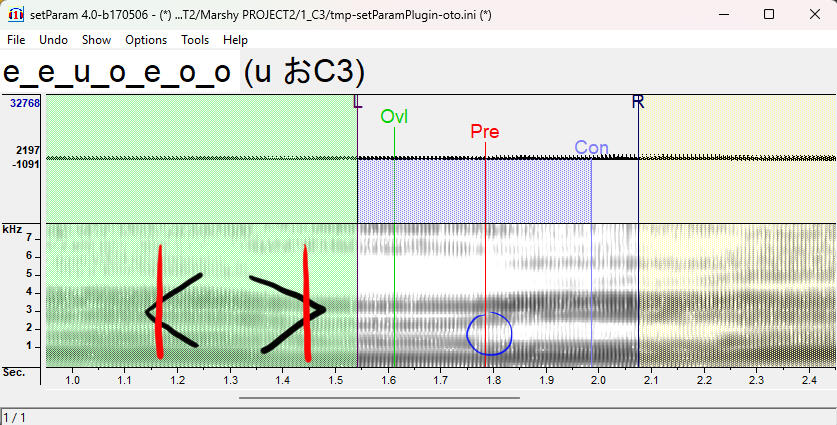
VVs
Beginning: A few moments before the end of the first vowel.Overlap: A little before the end of the first vowel's flat. SHOULD be 30-50% or less of the preutterance.Preutterance: Around half of a glide. Adjust to your preferences, but I found placing the preutterance like the above image works for me.Consonant: A little after the start of the next vowel's flat.Ending: A little before the end of the next vowel's flat.
VCV:
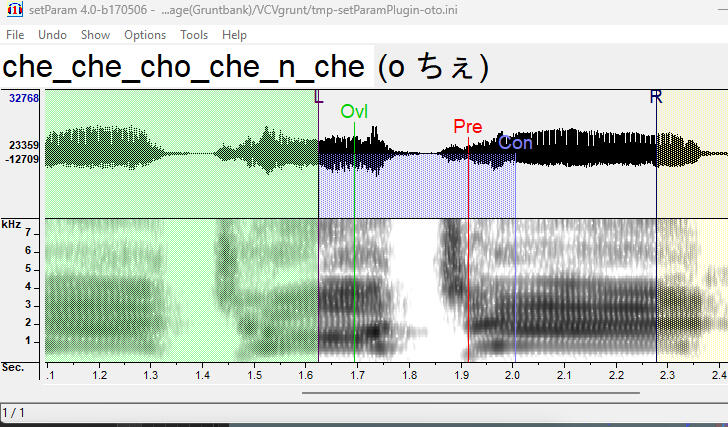
VCV
(Caution: in CVVC, rentan, and VCV please make sure your intended configuration lines are in the right place.)
Beginning: A few moments before the end of the flat.Overlap: A little before the end of the flat. SHOULD be 30-50% or less of the preutterance.Preutterance: Where the preutterance would usually be in a CV context.Consonant: A little after the start of the CV's flat.Ending: A little before the end of the CV's flat.
CVVC:
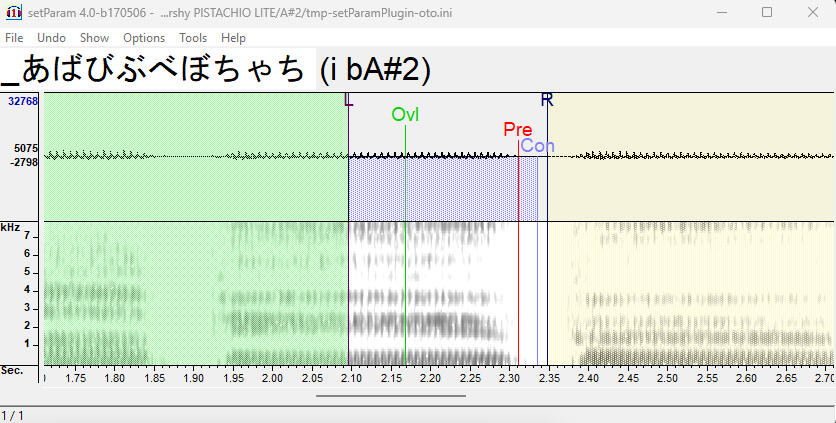
Hard VCs (b,ch,d,g,j,k,p,r,t,by,gy,ky,py,ry)
Beginning: A few moments before the end of the flat.Overlap: A little before the end of the flat. SHOULD be 30-50% or less of the preutterance.Preutterance: After the vowel ends.Consonant: A little after the preutterance, preferably in the 'silence of the C' (or as close as you can get to it.)Ending: A little before the consonant begins.
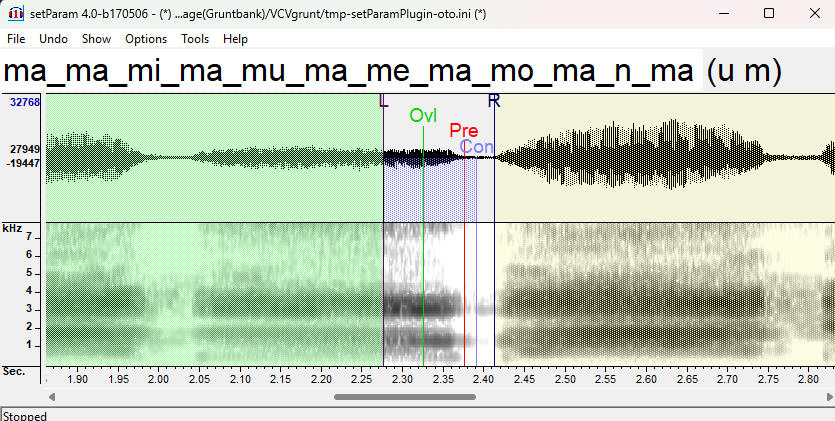
Soft Voiced VCs (m,n,w,y,my,ny)
Beginning: A few moments before the end of the flat.Overlap: A little before the end of the flat. SHOULD be 30-50% or less of the preutterance.Preutterance: After the vowel ends.Consonant: Around the middle of the consonant.Ending: A little before the next vowel starts.
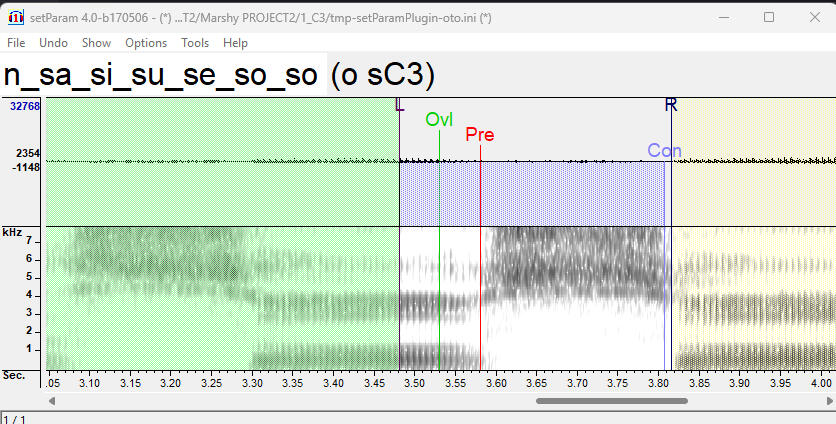
Soft Unvoiced VCs (f,h,s,sh,hy)
Beginning: A few moments before the end of the flat.Overlap: A little before the end of the flat. SHOULD be 30-50% or less of the preutterance.Preutterance: After the vowel ends.Consonant: Almost all the way to nearly the ending. This is because soft unvoiced consonants do not stretch well.Ending: A little before the next vowel starts.
🌳Publishing Your UTAU Covers: An Overview
(For this tutorial, you can travel to the covers by clicking the images!)
There are times where you're so happy with your cover that you simply want to share it with the world!Let's talk about some ways to do that:
An exclusively audio format is valid if you just want to post your cover with no additional energy to spend.You can do this in places like Soundcloud, where the sharing is exclusively for audio.(For this and all other formats, proper credit of the ppl behind the music/UST is heavily encouraged!)
First of all, non-animated image video covers are the second easiest way to release your cover. All it takes is any png + wav -> .mp4 workflow on a video editing software or website!
Video editing software is generally a tad harder and may need to be learnt in order to get the result that you want......but you may find that you'll have the power to make your png background... more animated!A recommendation for a video editor is AviUtl for its simplicity and the UTAU-related ability of... you know what? I'm not going to spoil what comes next!
(This is where Video Editing Software becomes necessary.)Assorted Image videos are where you assemble a standing image, a background, some borders, and an 'explanation' square giving you the details of the cover... or the singer!!This style of MV is often used in Voicebank Release videos, but this is NOT the only way to release your UTAU voicebanks on Youtube.
Overlay Videos are also an option! You sync your cover with a video of your vocal synth going through a song, add in any characters or effects, and you're good to go!(This also applies to just using a pre-existing MV and putting your cover on top... or rendering an MMD video!)
A screen-capture software like OBS can provide the tuning footage, but you can also use a plugin for Aviutl......And this is the surprise I talked about...
UTAUVIEW!
This plugin allows you to render your UST perfectly in scale (if I recall) while using a neat scrolling effect!However, this requires some setup in Aviutl first. It's actually pretty easy!
This is what I believe is the 'final' level of publishing your covers...Full-on Music Videos.This is where you get as creative and engaged in your video as you possibly can, using your art skills, all of your software, as many assets as you can make or collect... and a dream!Galactix/@StarDroid01's youtube videos are a perfect example! Her MVs span multiple styles with the capacity to hold immense ambition, from animations to motion graphics! These can serve as some good inspiration for the future!!
I have now provided a general overview of the many ways you(!) can release your UTAU covers!None of these formats are worse or better than the other, all that does matter is that you enjoy yourself... and have fun!!











